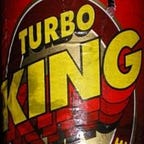Slidessays
In slides, as so often in life, less is more
I’m a huge fan of the well-written word. And obviously I think there’s a place for long-form writing — I wouldn’t be posting here if I didn’t. But one place where there’s absolutely no room (literally or figuratively) for more than a few essential words is a presentation slide.
More words less sense
Whatever situation you use them in, slides are there to facilitate interaction, not replace it. These days I think of them either as a prop for the presenter, in the classic presenter/audience setup, or (for less structured occasions) as a shared resource for the lead and the others in a meeting to dip into before returning to the discussion.
Clearly, in neither of these cases does it make any kind of sense to have a long-form essay sat mutely on a slide.
Long-form writing is a mode of communication all in itself, and requires time for the reader to digest and reflect upon. Essays, formal briefings, and reports are therefore wonderful fodder for reading on trains, in bed, at a quiet desk, or anywhere else that allows room for contemplative consumption.
But during a meeting, essays are useless: at a glance, one paragraph looks much like another, so people either have to ignore what you’ve put in front of them, or take time out from the meeting to wade through it — and how are either of those meant to help? And we all know how painful it is to read words off a projector screen while the guy at the front does the same...
Slide essays
And yet, all too often we see slides packed to the borders with text, bullet after bullet, with twenty or more words per line making it still harder to read.
It’s easy to see why this happens — we’ve been taught how to write essays, but very few of us have been taught to think visually, and until we start to see things differently, we tend to think of slides as landscape-oriented essays. Cramming our slides full of text also soothes our nerves, reassuring us that that every last point is there in case we happen to forget something on the day.
Let slides be slides
I keep the number of words on my slides to the absolute minimum needed to make the important points. There’s nothing to stop me bringing a longer crib-sheet, or moving 90% of what was on the first draft of the slide itself into the notes pane.
As I point out here, the discipline involved in cutting to the chase has several advantages. But the oddest thing is that the less you put on the slide, the more your colleagues and audience will get out of it
